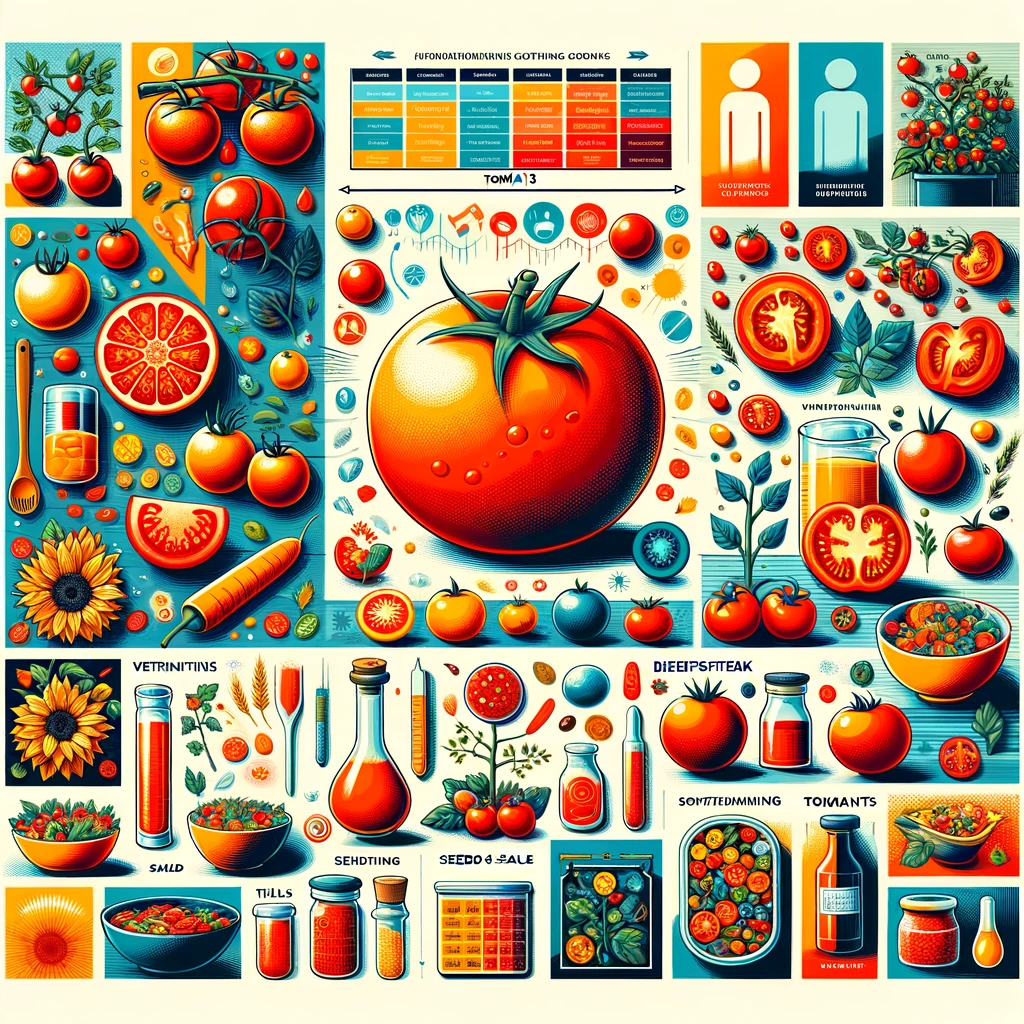A Brief History of Tomatoes in the USA
Early Introduction Tomatoes, originally native to South America, made their way to the USA in the 16th century. However, they were initially met with skepticism and considered toxic. It wasn’t until the 19th century that tomatoes gained widespread acceptance and began to be cultivated extensively.
Production Timeline Over the years, tomato production in the USA has evolved significantly. California, Florida, and Virginia are among the top states leading in tomato cultivation. The development of tomato varieties suitable for different climates has played a crucial role in expanding the industry.
Tomato Varieties in the USA
1. Processing Tomatoes Processing tomatoes are primarily grown for canning and tomato-based products such as sauces, ketchup, and pastes. They make up a significant portion of the tomato industry and are mainly produced in California.
2. Fresh-market Tomatoes Fresh-market tomatoes are sold directly to consumers and restaurants. These tomatoes come in various shapes, sizes, and colors, with the beefsteak and Roma varieties being the most popular.
3. Specialty Tomatoes Specialty tomatoes, including cherry, grape, and heirloom varieties, have gained popularity due to their unique flavors and culinary versatility. They are often considered gourmet choices.
Challenges Faced by the Tomato Industry
1. Pests and Diseases Tomato plants are susceptible to a range of pests and diseases, which can affect yield and quality. Common issues include aphids, whiteflies, and blight diseases.
2. Seasonal Variability Weather conditions, such as droughts and hurricanes, can significantly impact tomato production. This seasonal variability poses challenges for farmers and affects supply and prices.
3. Labor Shortages The tomato industry heavily relies on labor, and finding an adequate workforce, especially during peak harvest seasons, can be a challenge due to immigration policies and labor shortages.
Economic Impact of the Tomato Industry
1. Job Creation The tomato industry provides employment opportunities to thousands of people across the USA, from farmworkers to food processing and distribution.
2. Contribution to GDP Tomato production and processing contribute significantly to the country’s GDP, generating billions of dollars in revenue annually.
3. Exports The USA is a major exporter of tomatoes, with countries like Canada and Mexico being the primary importers. This export business plays a crucial role in maintaining a healthy trade balance.
Sustainable Practices in Tomato Farming
1. Organic Farming Many tomato growers are shifting towards organic farming methods, reducing the use of synthetic pesticides and promoting healthier, more sustainable practices.
2. Crop Rotation Farmers use crop rotation techniques to minimize soil depletion and pest infestations, ensuring the long-term viability of tomato farming.
3. Water Management Efficient water management practices, such as drip irrigation, are employed to conserve water resources, especially in regions prone to drought.
Conclusion
The tomato industry in the USA has come a long way from its early days of suspicion and has grown to become a cornerstone of American agriculture and cuisine. With its historical significance, diverse varieties, and substantial economic impact, tomatoes are a symbol of the country’s agricultural prowess. However, challenges persist, and the industry is continually adapting to meet the demands of a changing world. As consumers, we can support this industry by choosing locally grown tomatoes and promoting sustainable farming practices. The future of the tomato industry in the USA looks bright, promising delicious tomatoes for generations to come.
